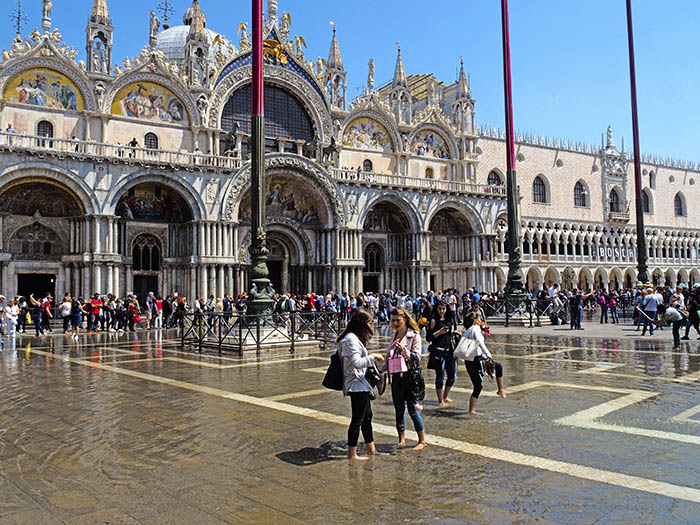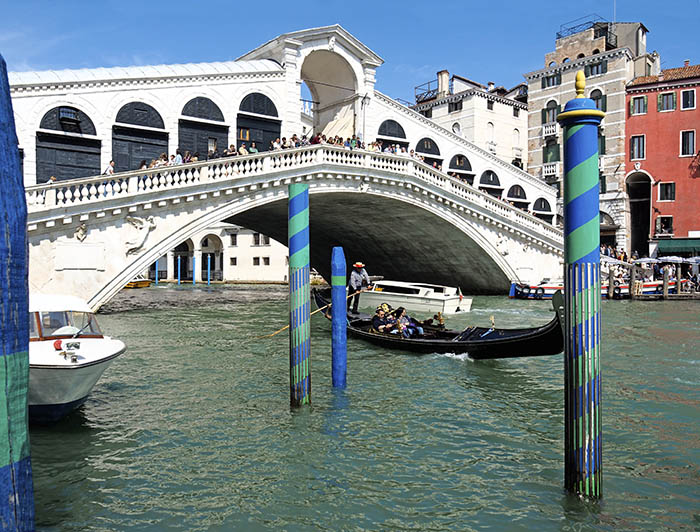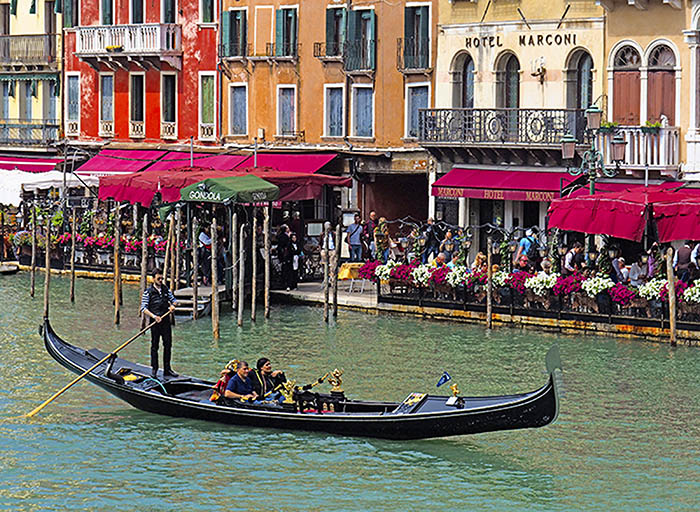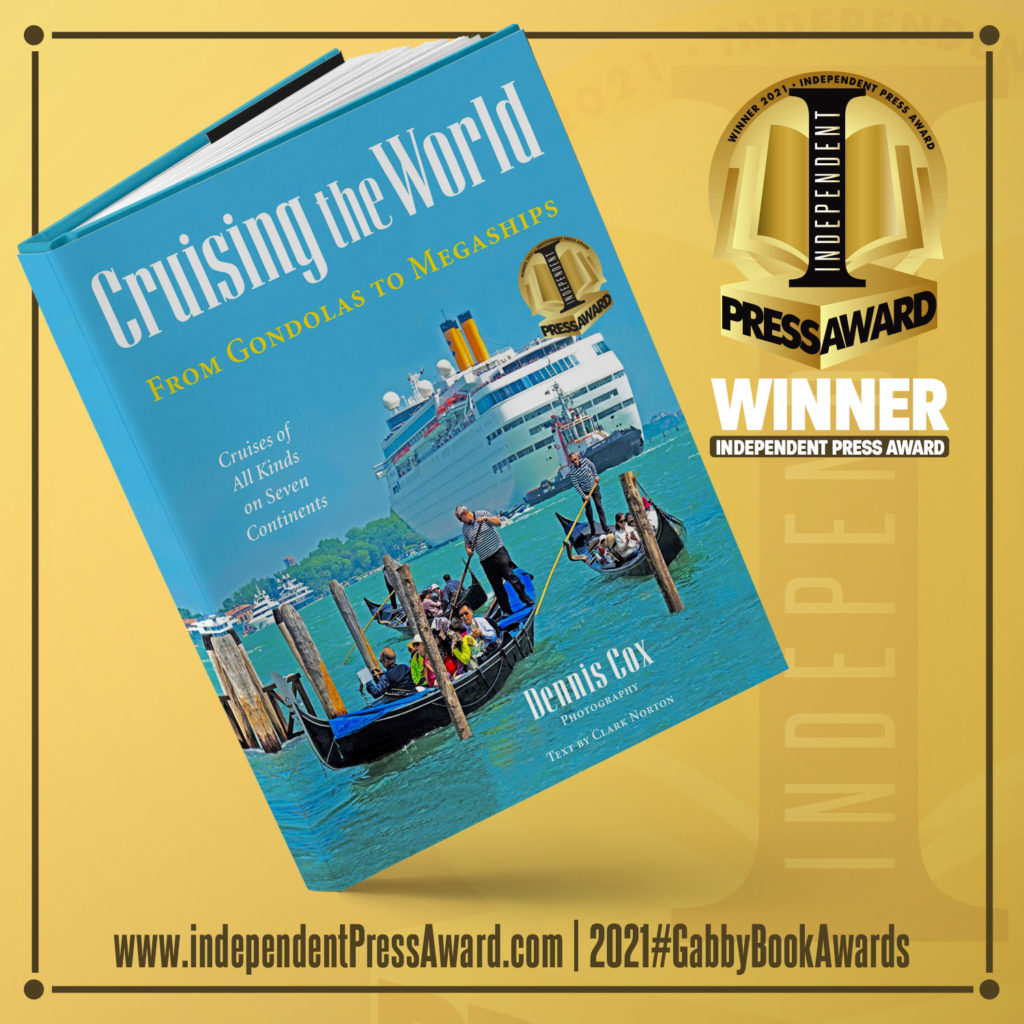
Venice has always been one of my favorite cities. If there’s a more beautiful city in the world, I haven’t found it. And millions of other people would say the same.
And therein lies the problem: Millions of people visiting (and tromping through) one of the most fragile cities on the planet — at the rate of 80,000 per day in summer, far outnumbering Venice’s own residents.
After all, the city is built on a lagoon, canals snake through its heart, and its centuries-old palazzos, churches, and art treasures are subject to erosion, flooding, and tsunamis of tourists as well.
It’s been called a “poster child for overtourism” — meaning, simply, too many tourists for its own good, compounded by massive infusions of cruise ship passengers and other day-trippers. It’s remarkable that any gondolier worth his stripes can maneuver his full craft through the gondola-traffic-choked canals and still have enough lung-power to croon a romantic tune or two.
I plead guilty to helping fuel the glut — I’ve made at least a dozen visits there over the decades and spent perhaps two months there total (though never as a day-tripper) — and written about the charms of Venice many times.
Some of the happiest moments of my traveling life have been riding the number one vaporetto (water taxi, like a small ferry) along the Grand Canal, or parking myself in my favorite outdoor table at a bar at the foot of the Rialto Bridge.
If I could somehow purchase that tiny piece of table-top real estate, with its chairs backed against the Rialto and lapped by the waters of the canal, I could happily end my days ensconced there watching a whirl of boats go by, while sipping an Aperol spritz or three.
Venice Strikes Back

Shortly after banning large cruise ships from docking right in the heart of the city — more to protect the docks themselves than to cut down on tourists, since large ships can still dock down the way a bit — Venice has now approved a plan to charge admission to the city starting in the summer of 2022.
According to the Italian newspaper La Stampa, the fees will come complete with electronic turnstiles, as you might find at an amusement or theme park. Tourists will also need to book their visits in advance; the city plans to limit daily entrances.
The measures are clearly aimed at cruise ship passengers and other day-trippers. If you’re a visitor who has booked a hotel in Venice, you’ll be exempt from paying the fee, as are children under six and, of course, Venetian residents and their relatives.
Nor is the fee much of a deterrent from visiting. It will start around three euros (currently around $3.50) and max out around 10 euros (around $11.75), depending on the season — not enough for a couple of cups of coffee at one of the pricey cafes on St. Mark’s Square.
The proceeds will reportedly be used to “clean up the city,” according to local officials, and if it does indeed go to that cause, good for them.
A Theme Park of Past Centuries?

But the turnstiles and fees, however modest, do conjure up images of Disneyland (well, not the modest fees) and other theme parks.
Maybe this “theme-park-ization” of Venice was inevitable. By all rights, the city should not even exist in the modern world, perhaps going the way of Atlantis and offering its charms only to deep sea divers and nostalgic dreamers.
Built precariously on a series of islets dotting a lagoon, Venice is an almost hopelessly twisted knot of winding streets and canals, arching stone bridges and narrow — sometimes blind — alleyways.
For more than a thousand years, this tangled web served to repel invaders and helped the city-state survive as one of the great seafaring powers, worldly, wealthy, and cultured — a dazzling fairyland of medieval palaces, Gothic churches, Renaissance guildhalls, Byzantine domes, and soaring spires and towers that seem to float on the sea.
But in modern times Venice has been threatening to sink into that very sea.
Can it be preserved for future generations? Perhaps. During the height of the COVID pandemic in 2021, tourism dropped off the map in the way that admission fees could never accomplish.
The locals — of two minds to be sure, since most depend on tourism for a living — noticed that the famously polluted canal waters seemed remarkably clearer.
So what’s an eco-minded prospective Venice visitor to do? Sacrifice seeing one of the most wondrous cities in the world? I do have some suggestions, which I’ll talk about in my next post.
Next Up: How Not to Be an Overtourist in Venice
Top photo by Dennis Cox/WorldVIews: Tourists line up to enter Venice’s St. Mark’s Basilica despite minor flooding in the square.
And speaking of gondolas and more great images from Dennis Cox… check out our book Cruising the World: From Gondolas to Megaships, available by order from PhotoExplorerBooks.com!













Leave a Reply